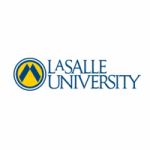Below is a summary of the abstract you submitted. Presenting author(s) is shown in bold.
If any changes need to be made, you can modify the abstract or change the authors.
You can also download a .docx version of this abstract.
If there are any problems, please email Dan at dar78@pitt.edu and he'll take care of them!
This abstract was last modified on May 25, 2016 at 8:08 p.m..

Nineteen novel mycobacteriophages were isolated and characterized by La Salle’s Phage Hunters in 2015-2016. LouisV14, isolated from soil from Ambler, PA, and RitaG, isolated from soil from Bensalem, PA, are mycobacteriophages infecting the same host bacterium, Mycobacterium smegmatis mc2155. The DNA of each phage was sent to the Pittsburgh Bacteriophage Institute for whole genome shotgun Illumina sequencing method. The LouisV14 genome is 44,145 base pairs in length and belongs to the G1 cluster whereas that of RitaG is 57,789 base pairs in length and belongs to F1. Their cluster designations mean that they have relatives with similar nucleotide sequences, and that these two phages are in different clusters means that they do not share a large part of their genomic sequence. Electron microscopy reveals that they are both of the Siphoviridae morphotype. LouisV14 has a GC content of 66.6%, higher than the GC content of RitaG 61.6% which indicates a higher percentage GC hydrogen bonds in the DNA from LouisV14. The genomic sequence in RitaG is, after annotation, made up of 105 genes (4 reverse facing) and LouisV14 only had 64 (with 5 reverse facing). Most interesting in the annotation process for RitaG was that a tmRNA was found in the genomic sequence between base pairs 42110 and 42463. Transfer RNA is essentially not a part of a phage's genome but rather a part of its host`s. That tmRNA was found in RitaG means that the phage has started the process of attaching to the bacterium. It is likely that the tmRNA to codons that are simultaneously highly used by the phage genes, while rare in the host genome. LoiusV14 is most similar to mycobacteriophages Angel and Halo. RitaG is most similar to Daenerys and Sisi. For both genomes we note that the genes coding for structure lie at the beginning of the genome while genes coding for enzymes follow the structural genes.


